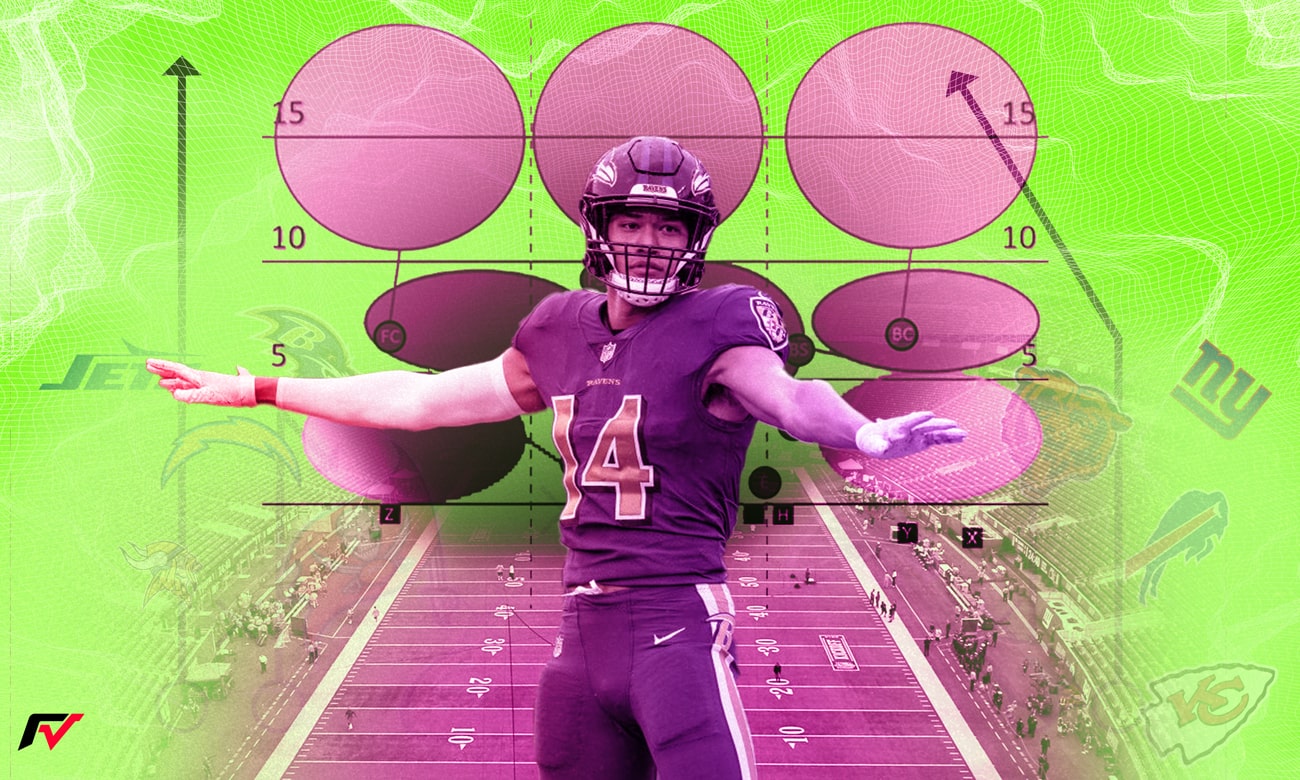Five Defensive Trends Heading into the 2024 NFL Regular Season

The NFL is an ever-changing ecosystem, with a natural ebb and flow to its evolution each season. We are currently heading deeper into the post-Spread Era. The point explosions we saw following the 2018 season are quickly evaporating.
Defenses have caught up, if ever so slightly, but as we know, offenses are always one step ahead. Still, defenses have a responsibility to respond. Here are the top five defensive trends heading into the '24 season.
'Tango' Pressures
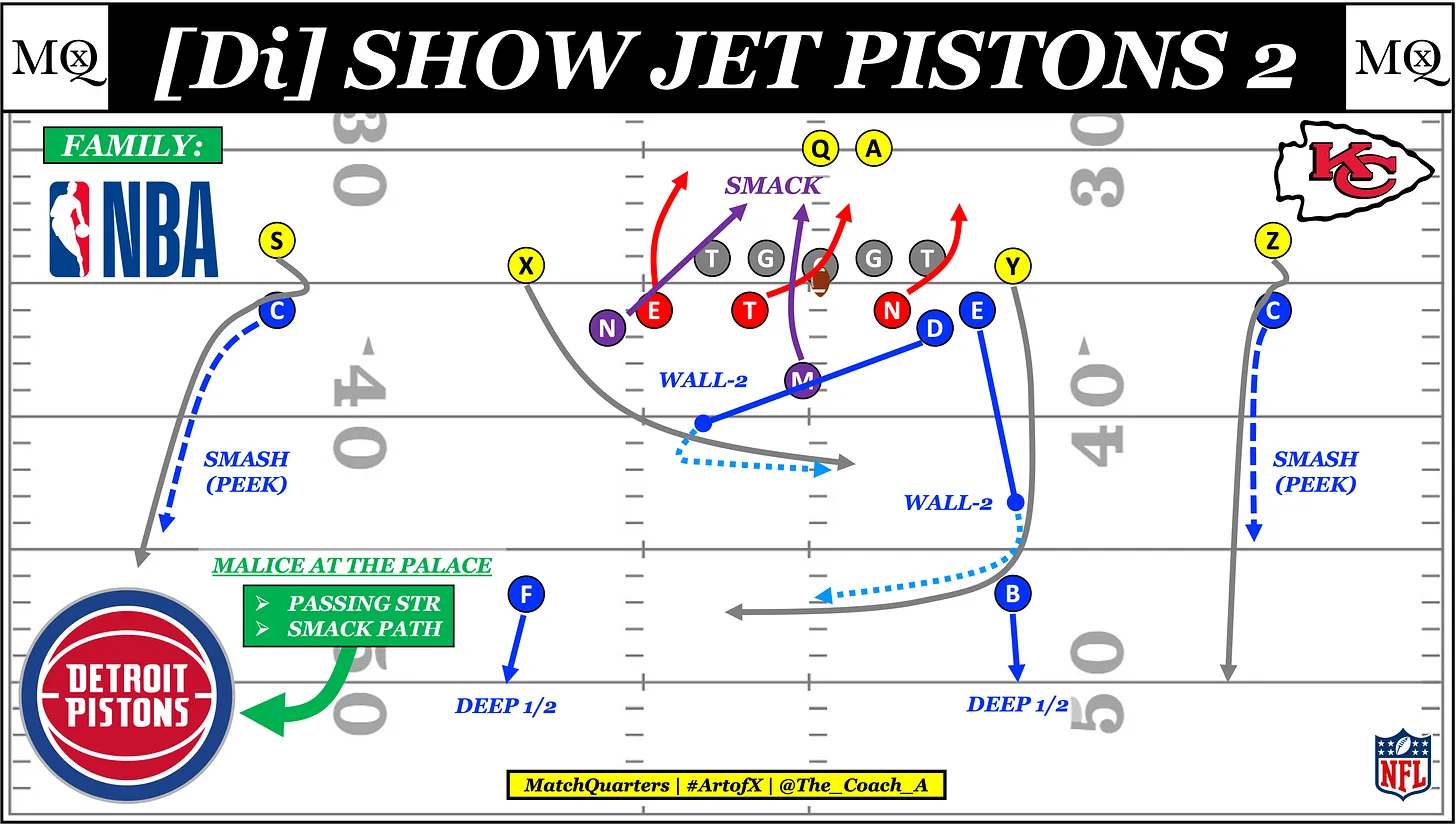
Image via MatchQuarters.com
No team runs split-field coverages more than the Chiefs. Defensive coordinator Steve Spagnuolo created a Kansas City system based on middle-of-the-field open coverage, which even bleeds into their pressure package. Though simulated pressures* have become a popular term, the reality is that most NFL pressures are of the five-man variety. Traditionally, that means defenses played in a 'Fire Zone' or 3-Under/3-Deep coverage.
Offenes have become good at attacking Cover 3, so Fire Zone, with one less defender, makes it even easier for offenses to target. This year, a trend to look for is a shift to utilizing more split-field coverages behind five-man pressures, or what the Chiefs called 'Tango' coverage, something Spags has been running since working under Jim Johnson in the early 2000s.
Tango coverage allows a defense to hold their Quarters shell while still attacking the offense's protections, capping verticals and making it harder for offenses to garner explosive plays.
Even Front, Odd Spacing, and the Rise of the 'Penny' Package
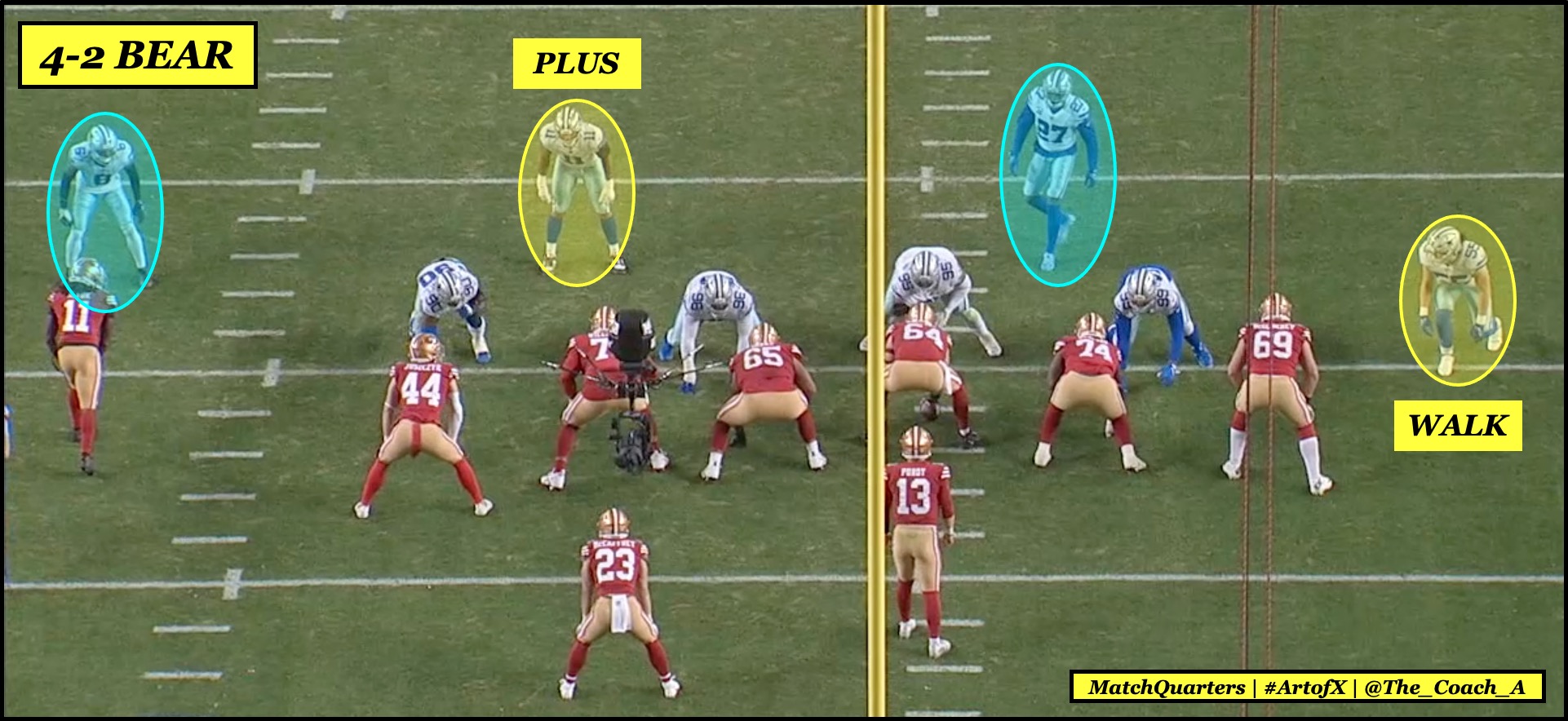
Leighton Vander Esch (55) is 'walked' down to create an odd front.
Football is experiencing an era of hybridization. Players are being asked to add value to their play. Only being able to play on early downs (1st/2nd) or 3rd is not enough. Cap space is limited, and every position matters. Offenses have evolved to play 11 personnel (3 WRs, 1 TE, 1 RB) schemes even in 12 pers. 'Heavier' packages force defenses to decide how they want to play.
Go too light, and the offense will hammer the front with the run. Go too heavy, and the offense pummels the defense's worst coverage defender. One way teams, odd and even based, are combating these hybrid offenses is by utilizing a Penny Package, or a 5-1 alignment.
For odd defenses, this is easy; the team takes off an ILB and replaces him with a Nickel. For four-down fronts, this can be more difficult. Teams like the Chiefs and Saints that base from an even front walk down an ILB and shift the D-line to create odd spacing.*
These hybrid ILB/Edge defenders allow the defense to shift spacing and force the offense to be flexible. The five-man front also alleviates uses in the box when facing teams that want to run 11 pers. concepts from 12 pers. (think Lions). The defense can still play their Nickel package but simulate a loaded box on the line of scrimmage.
A shift to zone defense

Man coverage is hard, and finding elite CBs is even more challenging. Offenses are excellent at creating matchup issues, and the rise in pre-snap motion only exacerbates the problems. Defenses across the NFL have begun to shift to zone defense. Cover 1 rates over the past five years have plummeted. Sure, some teams like the Browns and Cowboys want to stay in man as long as possible, but both have a very curated roster. Zone defenses also have higher production because they see the ball when thrown. This leads to more turnovers and less big plays for the offense.
The top schemes in the NFL are also zone-based. Vic Fangio (Falcons, Panthers, Rams, Eagles), Mike Macdonald's Ravens 2.0 (Ravens, Chargers, Dolphins, Seahawks, Titans), and the Shannahan boys (Packers, Jets, Texans, 49ers) are all heavily based in zone coverage. That's almost half the league. Add in the Giants (Bowen), Chiefs (Spagnuolo), and Bills (McDermott) to the zone-heavy list as well.
A natural reaction to this has been escort screens, where the offense places a blocker in front of the checkdown. If defenses are going to force a low throw, offenses might as well leverage him with a blocker.
The 'Big' Nickel position is back
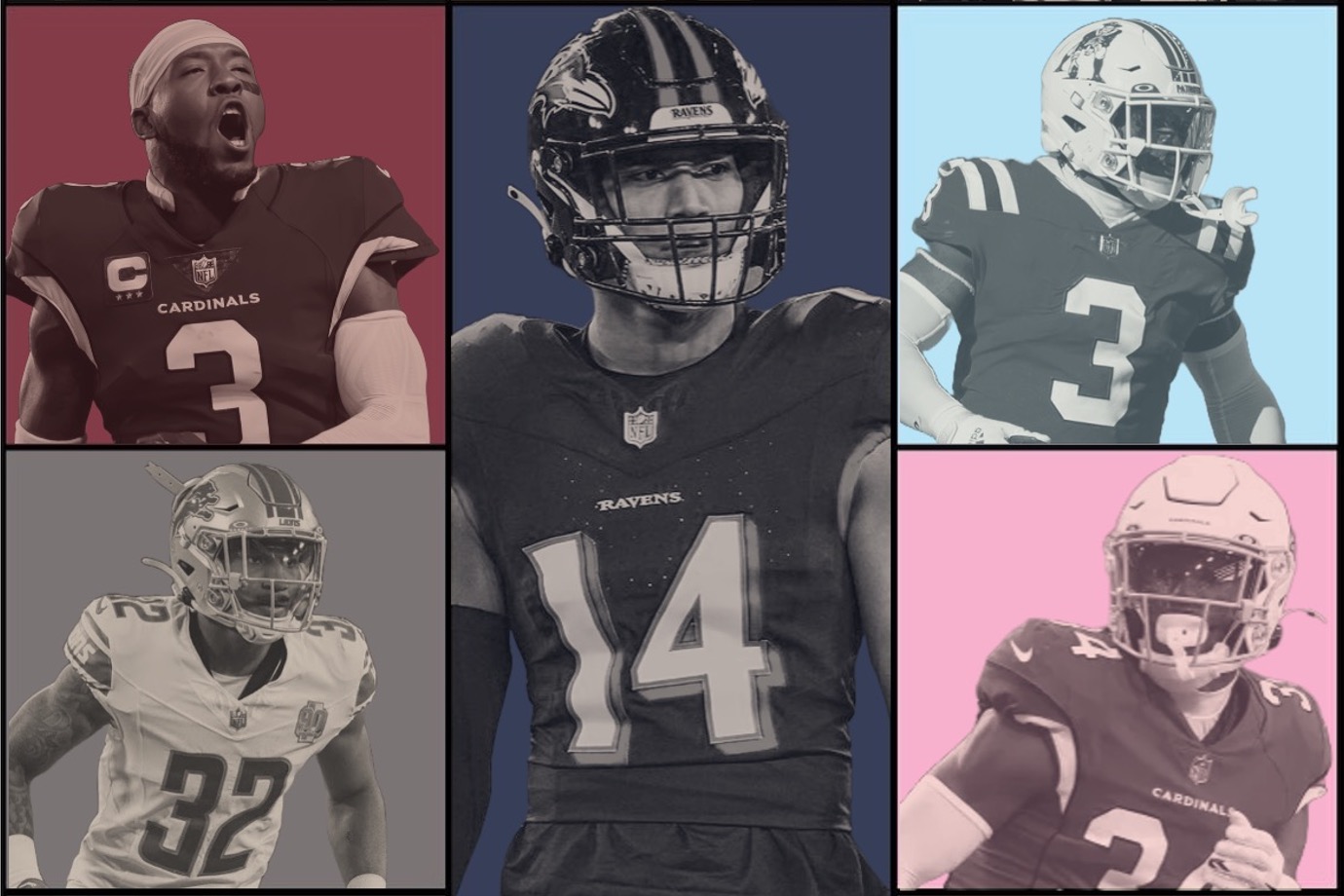
Welcome (back) to the NFL's Big Nickel Era
When the offensive explosion began in 2018, defenses shifted to using a pure coverage defender in the Nickel. The move got a 'bigger' player off the field and allowed the defense to carry three CBs to combat the multitude of WRs on the field, even matching up with TEs.
As we see more 12 and 13 pers. (even 21p) across the NFL, teams are beginning to use 'big' Nickel packages again. The Ravens, Cardinals, and Patriots are prime examples of teams that used a Safety in the Nickel position.
In Baltimore's base defense, Hamilton was a starting Safety, but when the Ravens shifted to a sub-package, Hamilton could work down near the box. This versatility allowed Baltimore to better match up with NFL offenses.
The Cardinals had two Safeties that could play near the box, Budda Baker and Jalen Thompson. Both defenders excelled in a 'big' Ni role last season. Field Vision's Havoc ratings have Baker as the #4 Box Safety and the #1 Safety overall against the run.
In New England, former Head Coach Bill Belichick used a four Safety rotation of Jabrill Peppers, Kyle Dugger, Jalen Mills (Giants), and Adrian Phillips (FA). Each Safety has a different skill set and could be used as a lever near the box or in coverage, depending on the matchup. With Mills and Phillips now gone, Head Coach Jared Mayo will most likely use hybrid Marte Mapu as the third Safety.
Sticking with the trend he started in Baltimore, newly appointed Seahawk head coach Mike Macdonald obtained three Safeties this offseason to give him backend versatility: Rayshawn Jenkins (Jaguars), Julian Love (Giants), and K'von Wallace (Titans). Each Safety can play near the box, and having a 'big' Ni allows Seattle to move CB Devon Witherspoon outside. The Seahawks are one CB away from being a dangerous defense, and a move to playing more 'big' Ni might mitigate that issue.
Rise of Quarters
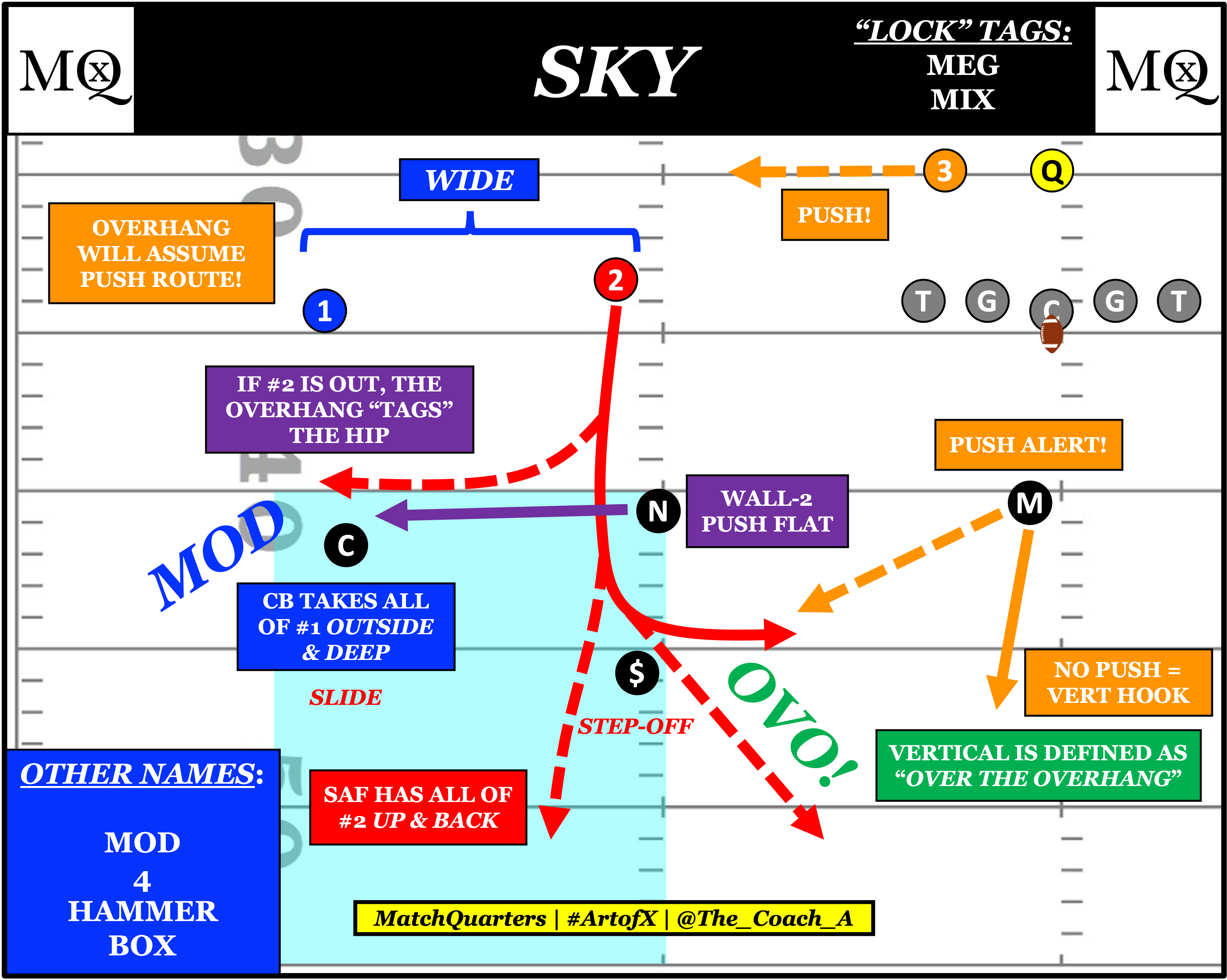
Image from MatchQuarters.com.
The shift to Quarters coverage around the league has corresponded with the rise of zone. Cover 3 has always been the dominant form of zone coverage, but more defenses are shifting to playing Quarters or at least carrying it in their package.
More teams also play split-field coverage behind their pressures, accelerating the shift. Quarters allows a defense to cap verticals and compress the field. It also caps the overhangs or seam defenders, alleviating pressure.
One of the main problems with Tampa or Cover 2 coverage is that the vertical hook, or Wall-2, defender has to carry a vertical. The Deep 1/2 Safety works to the apex of both WRs. Offenses can easily take advantage of this matchup if it is not a coverage-first defender.
Quarters spreads the secondary out and plays the DBs top-down or from the table. Offenses are forced to throw low in the zone and 'work' for their yardage.
*Simulated Pressure: The defense 'simulates' five or more defenders on a rush, only sending four. This concept allows the defense to simulate a rush but keep its regular seven-man pass distribution.
*Spacing is a 'coach speak' term that describes where the anchor points (DL) are located. Odd means the B-gaps are closed, while even means an open B-gap bubble exists.
Follow Cody Alexander at MatchQuarters.com, Twitter/X, Instagram, or TikTok.
As we dive in, we look forward to the conversation, debate, and your feedback. Hit us at @fieldvisionmi on X, @fieldvisionsports on Instagram, or on our website www.fieldvisionsports.com.
